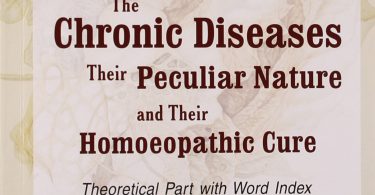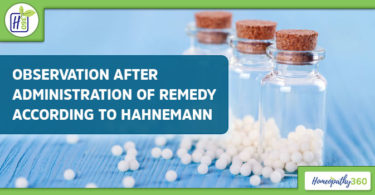
MEDICAL PRACTICE
Hettstedt (1780)- first practice as a physician-
Little town of 3000-4000 inhabitants. Not rich. Centre for copper mining
Hahnemann set up his first practice in the small copper mining town of Hettstedt in the district of Mansfeld in the summer of 1780.
Medical practice in 18th and 19th century consisted of withdrawal of blood by venesection, cupping, leeches etc. Hahnemann felt it was impossible to develop mentally and physically here in Hettstedt as there was no profitable occupation, no social intercourse for his intellectual advancement. He began writing articles which he published in “Kreb’s Medical Observations”
After 9 months
Dessau (April 1781)
Dessau was a larger town. There was a Grammer school, Girl’s high school. An intellectual life prevailed here.
There was better social interaction and facilities for acquiring knowledge. Hahnemann studied mining technology and improved his knowledge of mining science and metallurgy.
His interest arose from his exposure to this industry at Hettstedt. At the same time, Hahnemann was busy studying chemistry.
It is remarked that- ‘Had he chosen chemistry rather than medicine for his career, undoubtedly he would have made a significant contribution in this field’
This activity and his profession brought him in contact with Haseler’s pharmacy
There he became acquainted with Haseler’s step daughter,
JOHANNA HENRIETTE LEOPLODINE KUCHLER (17 years old) → got engaged to her. His impending marriage led him to accept a post, at a substantial salary, as Medical officer in Gommern at the end of the year 1781.
Gommern (end of 1781)-
Gommern like Hettstedt, was a small town consisting mainly of one long, densely populated street, and rest a scantily-populated area. Not much population.
As a medical officer, he got married to Johanna Henriette Leoplodine Kuchler (19 years old) on 17th November 1782. Most probably his parents did not attend his marriage. His father gave him an ivory fan, hand painted by himself, as wedding present.
Practice in Gommern did not give him sufficient income. Country folk relied on their traditional herbal medicines and witch craft. Practice was slow. Hahnemann had leisure time to continue study of chemistry. During this time, Hahnemann-
- Translated a number of books on chemistry into German- principally, a work by a French chemist Demarchy, his book in French- ‘The wholesale manufacture of chemicals or the science of preparing chemical products in factories’, published in 1781. He translated the whole work mechanically; also inserted a number of footnotes, supplements, references, etc.
- Wrote original articles- in second volume of “Medical observations” by Dr. Kreb’s, 1782, are included a few of Hahnemann’s short treatises.
First of Hahnemann’s important medical works was-
Direction for curing old sores and indolent ulcers (Leipsic 1784)
In 1783– first child- Henriette (a daughter) was born
1784– 15th December- Father died- 66 years old
1780-1785- was a period of Restless wandering. During next 7 years, Hahnemann changed residence only twice.
Dresden (1785), capital of Saxony, the royal residential city-
moved here with his wife and daughter. He moved to Dresden as the rural environment of Gommern provided no intellectual activity and no opportunity for advancement in career.
30 November, 1786- 2nd child Friedrich (male)- (was either born with spinal deformity or became hunch back as a result of a coach accident)
1788- 3rd child Wilhelmia (female) (died at 30 years of life after having a son- Hermann)
Johanna took to knitting clothes because of meagre income and increasing family
Hahnemann had no job or post in Dresden. Income was mainly by translating books. Got ample opportunity to study. He continued to study science (especially chemistry) largely through translating books
Made many friends here-
- Dr. Samuel Wagner (MO of health for Dresden)- he assisted Hahnemann in his studies and to become acquainted with activities and duties of Forensic medicine.
- Hahnemann visited the Electoral library everyday where he could study further, continue with translations, write books and articles on chemistry and medicine. He became friends with the Library Superintendent, Hofrath Adelung and the Librarian, Herr Dassdorf, who advised him in the choice of suitable books.
- Hahnemann became acquainted with the celebrated French chemist, Antoine Lavoisier, on his visit to Dresden.
Literary work largely exceeded his medical practice in Gommern. Large number of works were published at this time.
Hahnemann translated 5 major works here-
- Demarchy’s ‘Art of Distilling Liquor’
- Demarchy’s ‘The art of Manufacture of liquor’
- B. Van den Sanden’s ‘Signs of the Purity & Adulteration of Drugs’- altered and added a lot to this translation, that it became practically his own. This work shows Hahnemann’s deep distrust of the integrity of many apothecaries (pharmacists) and unreliability of their medicines.
- Demarchy and Dubuisson’s ‘The manufacture of Liquor’ from French
- ‘The History of the Lives of Abelard & Heloise’ from English. It was a foreign classic literature- the romantic life of these ill-fated lovers.
Hahnemann wrote-
- 9 articles on chemistry & medicine all published in a journal, ‘Crell’s chemical Annal’s
- A short book entitled ‘Prejudice against healing with coal & ways of improving this fuel’
Wrote 2 full medical works
- ‘On Poisoning by Arsenic– its treatment & foreign direction’ (1786)
- ‘Instructions for surgeons on venereal diseases’ (1786) both 3& 4 published in Leipsic
- An article- ‘An unusually strong remedy for checking putrefaction’ published in 1788- It shows Hahnemann’s growing conviction that remedies should be prescribed in high dilution. The particular remedy mentioned was Silver Nitrate for treatment of chronic sores, in a solution of one part in 1000 with water.
- Published a test for wine- ‘Hahnemann’s Wine Test’. Original test– Wurtemberg Wine test- in use for a century for detection of poisonous lead in wine arising from adulteration by wine merchants to sweeten it.
↓
Officially adopted in Prussia
Leipsic and Scotferitz- (end of September 1789 till summer 1792)
Leipsic was the seat of university and book selling trade; Intellectual and cultural centre. So, Hahnemann moved to Leipsic to be in touch with the literary activities
1789- 3rd daughter- Amalie
Gave up his medical practice, earn money by translation only
May 1790, Death of his mother
1791- 4th daughter- Caroline
Now, he was a family of 6 with 4 children and wife, and increasing poverty → moved to Stotteritz where he could live more cheaply.
- Had no access to library facilities
- Had to work in the single room occupied by the whole family
- Did most of his work in the candle-light at night, when children were asleep and there was no distraction
During 1789-1792, Hahnemann spent most of his time in his literary work and writings, rather than practice. Literary work only helped him to support his family. He almost gave up his medical practice.
The Friend of Health– Volume 1- 1792 was published during this time. In this he stressed upon the importance of public hygiene.
Translations mainly consisted of chemical and medical works, from English, French and Italian in German.
Important Translations
- 1790- Arth. Young’s ‘Annals of Agriculture’ (from English)
- 1790- Cullen’s ‘A treatise on Materia Medica’ (from English with annotations)
- 1791- Monro’s Materia Medica (from English with annotations)
- 1791- Grigg’s Precautionary measures for the Female sex (from English)
With all these literary activities, he was elected as an honorary member in societies like- ‘Leipsic Economical society’ and the ‘Academy of Science of the Electorate of Mayence’.
In 1790, William Cullen’s- A Treatise on Materia Medica was written in English.
(Dr. Cullen was a leading teacher, chemist & physician in Edinburgh and an authority on medical substances)
Its 2nd edition was published in 1789- in 2 volumes
↓
Hahnemann translated this 2nd edition from English into German in 1790
(he gave an accurate translation, and also included a number of annotations)
In his materia medica, Dr. Cullen had devoted several pages to the properties of Peruvian bark in cutting intermittent fevers. He stated that ‘its action depended on its tonic effect on the stomach’ and that was mainly because it was strongly bitter. But Hahnemann was not satisfied with these arbitrary explanations. So, as an experiment-
Hahnemann took for several days 4 drams of good China, twice daily
and he was attacked by a kind of intermittent fever, yet without rigor. The paroxysm lasted from 2-3 hours, recurred on repeating the dose. On discontinuing the medicine, there was no paroxysm- again in good health. So, Hahnemann recorded in a note-
‘Peruvian bark, which is used as a remedy for intermittent fever, acts because it can produce symptoms similar to those of intermittent fever in healthy people’.
For the 1st time, Hahnemann recorded the effects of a medicine on a healthy person- PROVING. Here he sensed a law, which was to form the first principle in his new method of treatment.
In a separate annotation in Cullen’s work by Hahnemann, he wrote against blood-letting, purging, weakening diets, fever remedies, etc.
Again in 1792- Hahnemann attacked such a medical practice in an article, in the newspaper. ‘Der Anzeiger’ in Gotha on 31st March 1792. This occurred after the sudden death of Kaiser Leopold II, Austria, who had come to throne two years before he was attacked by a severe fever. Dr. Lagusius ordered venesection to combat this fever. When it failed, he ordered another one, & a 3rd & a 4th on, subsequently.
Hahnemann opposed this- when the 1st venesection had failed, why was 2nd & 3rd & 4th ordered. Several discussions followed this- some in favour and others against it.
Gotha (in spring 1792)
A temporary residence, and he soon moved to-
Georgenthal (in summer 1792)
Prince Duke Ernst von Sachen- Gotha, placed a part of his hunting castle of Georgenthal at Hahnemann’s disposal as a nursing home for mental patients. (announcement of its opening on 11th August 1792 was made in the ‘Der anzeiger’)
↓
Herrr Friedrich Klockenbring- 1st patient- brought in the end of June 1792
↓
Was cured but after him there were no more patients in Hahnemann’s Asylum → failure due to very high expense → Hahnemann closed his institution in 1793
(read the details an article in Hahnemann’s Lesser Writings)
Hahnemann had abandoned the use of large quantities of drugs by this time
After this, followed a period when Hahnemann continually changed his residence. In this travel, his medical practice, studies of chemistry etc. everything suffered; cost of travelling was very high; family numbered 10; and they were poverty stricken.
Hahnemann went to Molsohleben (1793-94), Muhlhausen, Göttingen, Pyrmont, Brunswick, Königslutter (1796), Hamburg (1799), Lauenburg (Sep 1800), Machern (1801), Eilenburg, Dessau (1804), Torgau (1805)
READ MORE –
https://www.bjainbooks.com/product-detail/samuel-hahnemann-his-life-times-by-treveor-cook
https://www.bjainbooks.com/product-detail/samuel-hahnemann-his-life-and-memory





